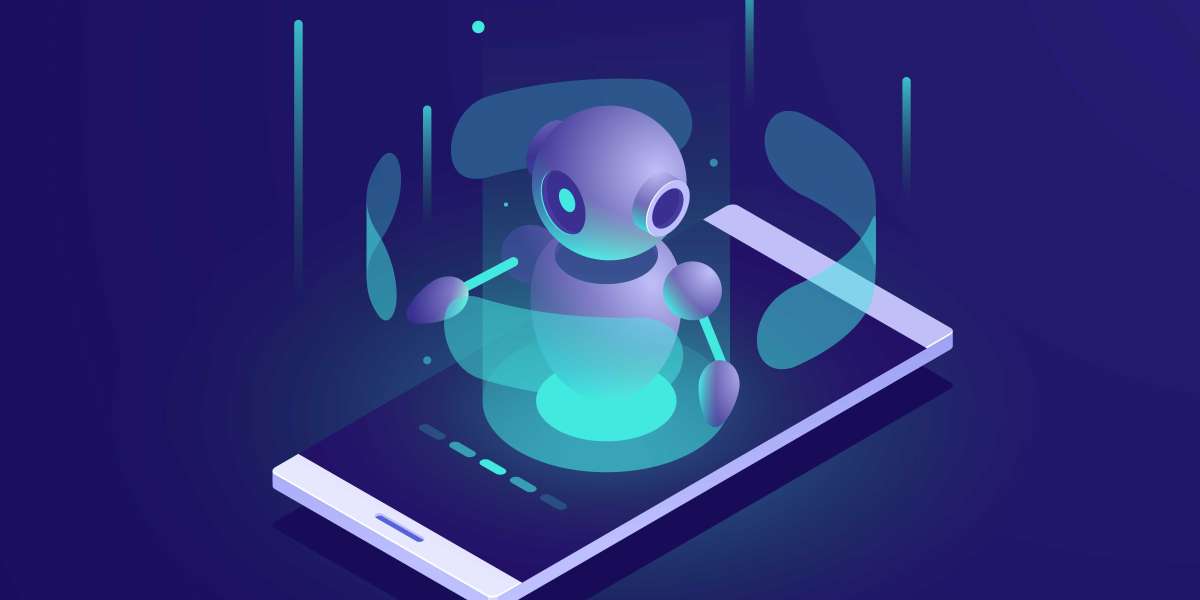Artificial Intelligence (AI) has undergone a seismic transformation in the past decade, and at the forefront of this revolution are AI chatbots. From humble beginnings as rule-based responders to becoming hyper-intelligent, adaptive communicators, AI chatbots have become one of the most powerful tools across industries. As of 2025, these digital assistants are no longer just reactive tools; they are predictive, emotionally aware, and highly personalized agents of change. This blog explores how smart AI chatbots have become in 2025 and what their evolution means for users, businesses, and the technology landscape.
The Journey from Scripts to Intelligence
Rule-Based Systems: The Early Days
Initially, AI chatbots operated using simple "if-then" logic. They were limited to predefined rules and could only respond to specific queries. While useful for static customer service inquiries, they lacked the ability to understand nuance or context.
The Advent of NLP and Machine Learning
By the early 2020s, chatbots had started integrating Natural Language Processing (NLP) and machine learning algorithms, enabling them to learn from user interactions and adapt over time. These capabilities allowed bots to hold more natural conversations and offer better customer support.
The 2025 Leap: Contextual and Cognitive Intelligence
In 2025, AI chatbots have evolved into cognitive entities capable of understanding emotions, interpreting abstract queries, and offering context-aware responses. This leap has been made possible by advances in deep learning, sentiment analysis, and large language models (LLMs).
Features That Define Smart AI Chatbots in 2025
1. Context Retention Across Sessions
Modern AI chatbots can remember previous interactions across multiple sessions. This feature is particularly useful in sectors like healthcare, finance, and e-commerce, where continuity is critical.
2. Emotion Recognition
Using sentiment analysis and tone detection, chatbots can now tailor responses based on user mood. Whether a customer is frustrated, happy, or confused, the bot adjusts its language and tone accordingly.
3. Multilingual Proficiency
Chatbots in 2025 are capable of fluently conversing in over 100 languages. More importantly, they can translate in real time, making cross-border communication seamless and inclusive.
4. Personalization and User Profiling
Chatbots now use AI models that develop deep user profiles. They personalize not just greetings but also product recommendations, support answers, and tone—leading to higher user satisfaction.
How Chatbots Are Revolutionizing Industries
Healthcare
In 2025, AI chatbots act as the first line of consultation. They can analyze symptoms, offer preliminary diagnoses, and schedule appointments. Integrated with electronic health records (EHRs), they provide context-aware support that saves time for medical professionals.
E-commerce
Retailers use chatbots to offer 24/7 customer service, personalized shopping experiences, and even upselling opportunities. These bots can now mimic human sales assistants with a near-perfect accuracy rate.
Education
Educational chatbots are now capable of tutoring students in real time, adapting to learning styles, and even identifying cognitive blocks. Their use has led to improved student engagement and outcomes.
Enterprise Automation
For businesses, chatbots now serve as internal productivity tools—scheduling meetings, providing project updates, and helping teams track performance metrics. Many organizations turn to a custom AI chatbot development services provider to tailor bots for their unique workflows and objectives.
Behind the Scenes: What Powers Modern AI Chatbots?
1. Transformer-Based Architectures
Most smart chatbots in 2025 rely on transformer-based models like GPT-5, BERT++, and other domain-specific adaptations. These models can process vast amounts of text and generate coherent, context-rich responses.
2. Reinforcement Learning with Human Feedback (RLHF)
To refine responses, bots are trained using feedback loops from human interactions. This method ensures they improve continually and align better with human values and expectations.
3. Edge Computing Integration
With increased focus on privacy and latency, many chatbots now process data on-device rather than sending it to the cloud. This reduces response times and increases data security.
AI Chatbots vs. Human Support in 2025
Despite all the technological advancements, chatbots haven't completely replaced human support. Instead, they serve as a powerful augmentation. For example:
- Chatbots handle repetitive tasks efficiently, freeing up humans for complex queries.
- In mental health services, chatbots offer round-the-clock support, while human therapists manage deeper interventions.
- In legal and financial services, bots handle document analysis, while humans provide nuanced advice.
The synergy between human intelligence and artificial intelligence has created a balanced ecosystem, boosting productivity and customer satisfaction.
Real-World Applications and Innovations
Smart Cities
AI chatbots are now integrated into smart city infrastructure. Residents can ask about public transport schedules, pay utility bills, or report issues through city-managed bots.
Banking and Finance
From fraud detection to personalized financial advice, chatbots have become indispensable. Many banks now offer AI-driven financial concierge services that track spending, suggest savings plans, and even warn users of unusual activity.
Software Development
The integration of AI chatbots into development environments has accelerated software engineering. Bots can now write, debug, and test code in collaboration with developers. In fact, development agencies like an ai software development company in usa are leveraging these intelligent assistants to streamline client communications and expedite project timelines.
Ethical Considerations and Data Privacy
User Trust and Transparency
Smart doesn’t always mean ethical. In 2025, AI developers are increasingly focused on making chatbots transparent in their actions. Users are informed when they're interacting with a bot, and explanations are provided for decisions made by AI.
Data Usage
With stricter global data protection regulations, AI chatbots must now comply with frameworks like GDPR 2.0 and the U.S. Federal AI Transparency Act. These laws ensure that data collection is consensual, and users can request deletion or correction of stored data.
Bias and Fairness
Despite advances, AI chatbots can still inherit biases from training data. To counter this, developers now use fairness evaluation frameworks and diverse datasets during training.
Human-Like Yet Distinct: The AI Identity
While AI chatbots in 2025 are impressively human-like, the industry is now more focused on transparency. Users are encouraged to understand the chatbot as a supportive tool rather than a human substitute. This paradigm shift fosters ethical use and encourages realistic expectations.
One common area where chatbots are heavily employed is within enterprise platforms. Businesses often hire asp.net programmers to integrate smart chatbot features directly into web applications, ensuring robust performance and compatibility across systems.
The Role of Voice and Visual AI in Chatbots
Voice Integration
Voice-enabled chatbots are now mainstream, allowing users to interact hands-free. These bots are used in customer service, vehicles, home automation, and accessibility tools for differently-abled individuals.
Visual Understanding
Some chatbots can now process images, charts, and graphs. In medical diagnostics or customer support, users can upload images for analysis, and the bot can provide relevant feedback.
Limitations of AI Chatbots in 2025
Despite all the progress, AI chatbots are not without their flaws:
- Over-Reliance on Data: Bots can only be as good as their training data.
- Lack of Common Sense: While bots are smart, they still struggle with common-sense reasoning in novel situations.
- Language Nuances: Certain dialects, sarcasm, or humor can still confuse bots.
- Dependency Risks: Businesses that overly rely on AI may lose the human touch that customers value.
What’s Next? The Future of AI Chatbots
Adaptive Personality Engines
Chatbots may soon be able to change their personalities based on user preferences—formal for business, casual for personal use, and empathetic for healthcare.
Hyper-Personalization at Scale
By leveraging quantum computing and advanced data modeling, future chatbots will deliver real-time, ultra-personalized interactions.
AI Self-Awareness?
There’s ongoing research into whether AI systems can develop a form of "machine consciousness"—not in the sci-fi sense, but in being aware of their own operations and performance. This could enhance self-correction and optimization.
Conclusion
AI chatbots in 2025 are a testament to how far technology has come in enhancing human-computer interaction. They are intelligent, adaptive, and incredibly efficient across industries. However, like any tool, their effectiveness depends on how wisely and ethically they are deployed.
Whether you're a business owner looking to automate customer service or a developer interested in AI integrations, the current capabilities of chatbots offer immense value. Yet, their true potential will only be realized when paired with human wisdom, transparency, and purpose-driven design.
By understanding both their strengths and limitations, we can harness AI chatbots not just as digital assistants but as transformative forces for the betterment of society.








